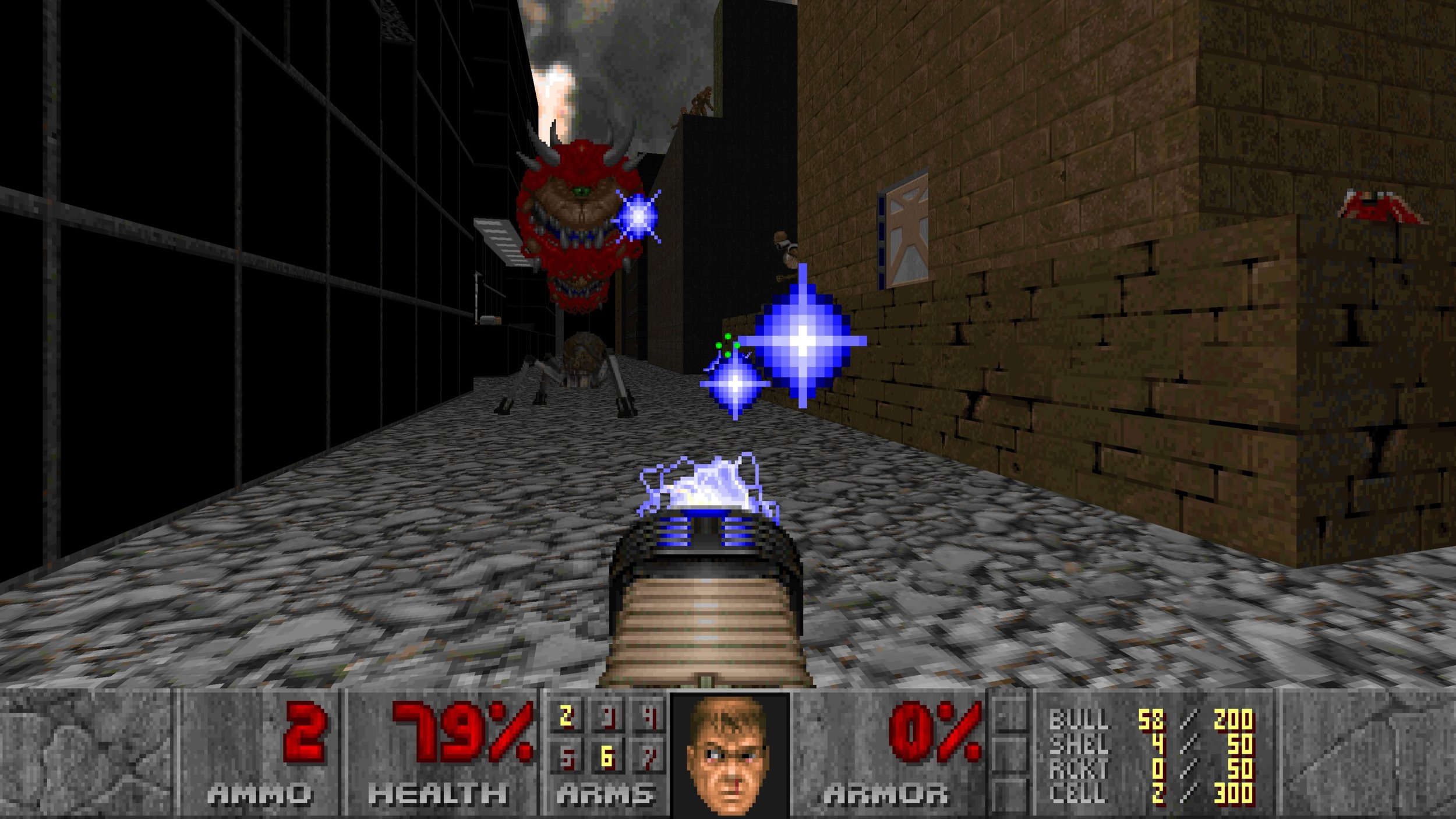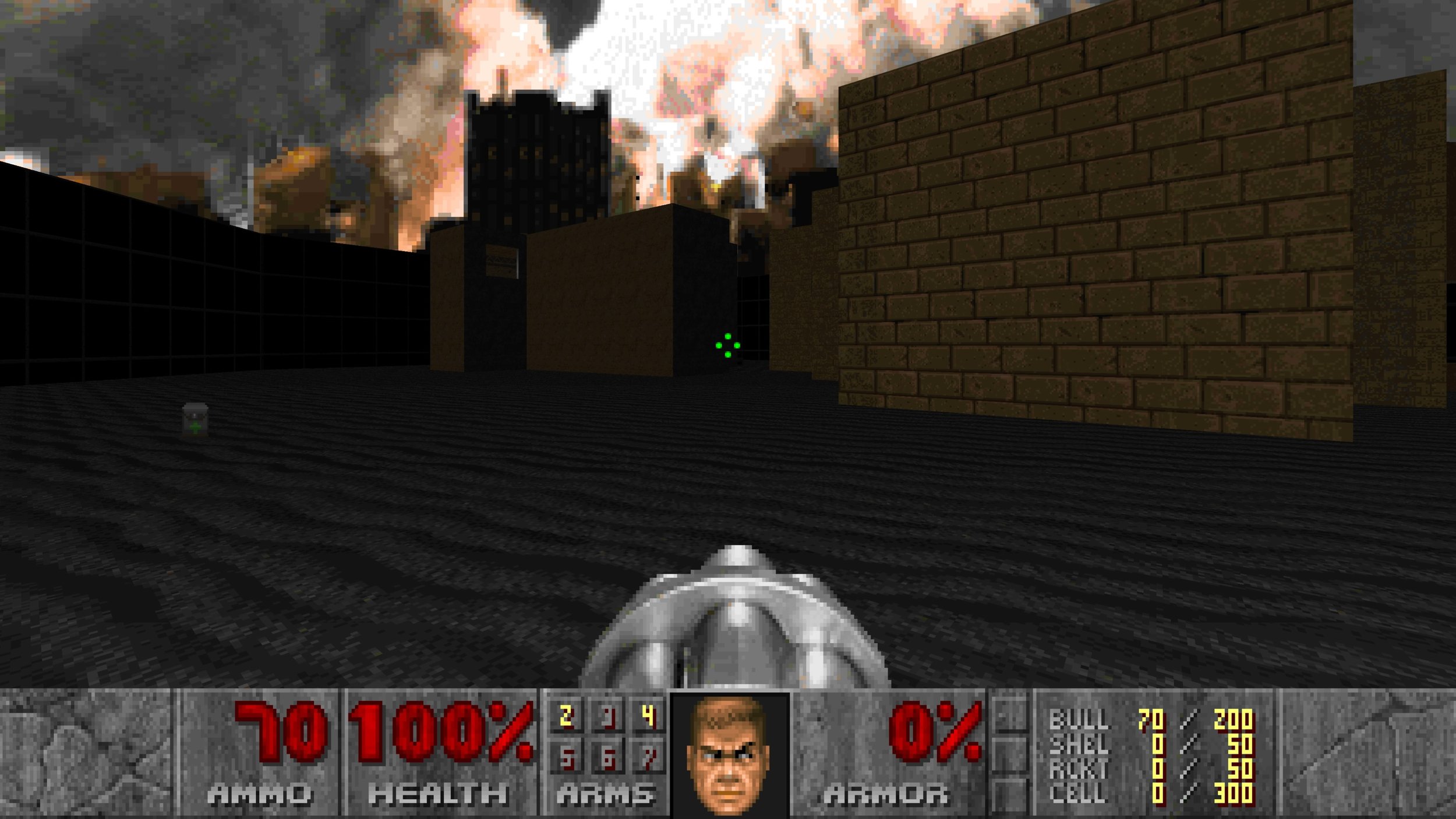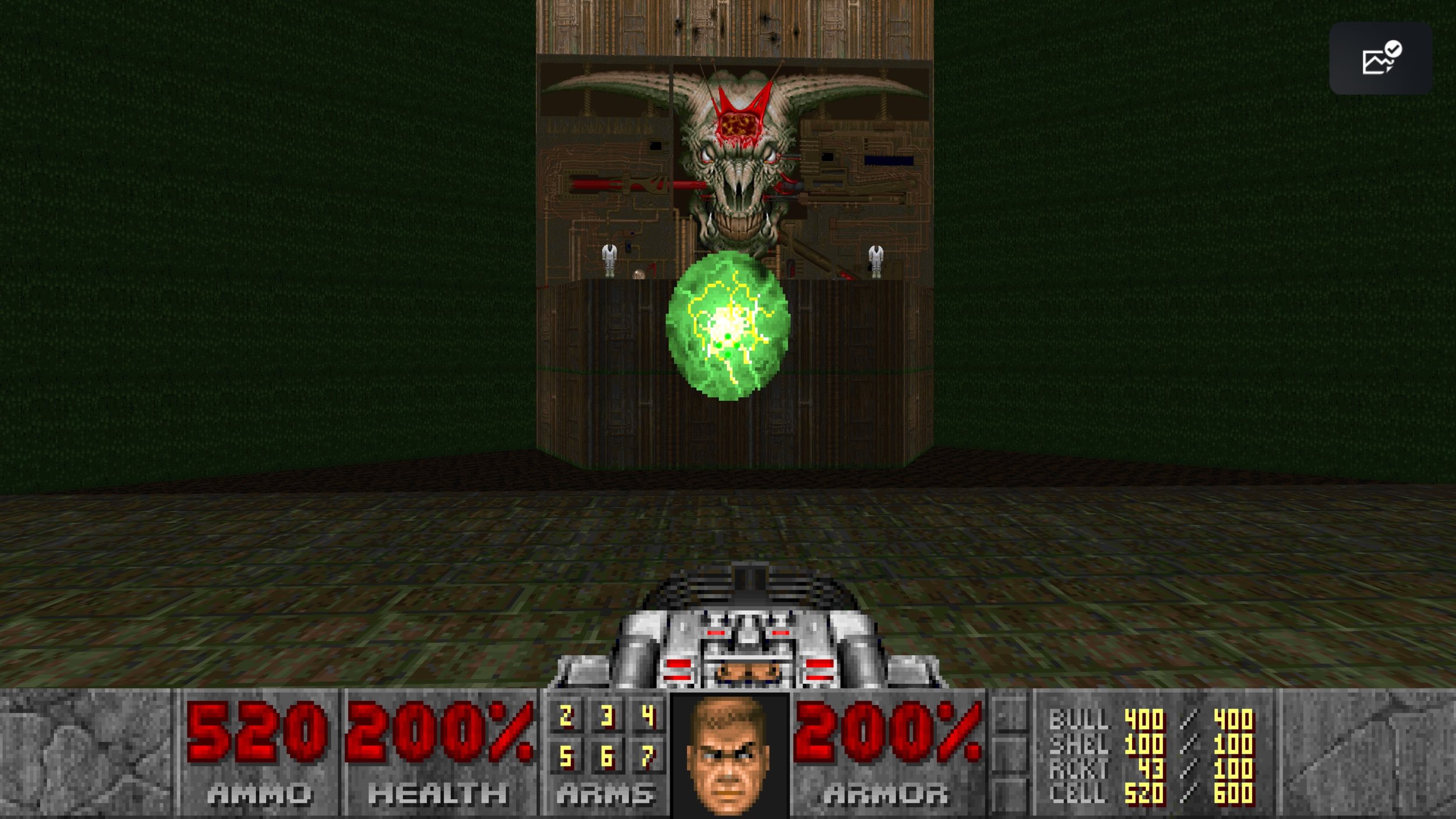DOOM II: Hell on Earth Retrospective
When we talk about sequels, we usually do so with an abundance of caution. Especially in the case of rushed sequels. Especially in the case of rushed videogame sequels. But despite it’s short creation time, DOOM II: Hell On Earth absolutely followed up with the initial message that DOOM delivered. Id Software understood they needed to raise the stakes. And DOOM II does just that,
The original DOOM took the world by storm and wanting to capitalize on that success, Id Software immediately got to work on a sequel. 9 months later, DOOM II: Hell on Earth was born. Expanding on the framework of the original, this new game included new monsters, 32 new levels and most importantly, a new weapon, perhaps the most famous weapon in FPS history- the Super Shotgun.
DOOM II avoids the cardinal sin of a strong game sequel: changing too much, too fast. Instead, it delivers the same kickass gameplay as DOOM, but this time bigger, better (in some places) and more hectic. Where as the first DOOM took some cues from horror, with it’s enclosed hallways, tight spaces and dark areas, DOOM II pivots fully into fast paced, gory action. After the events of DOOM, we should be desensitized to the violent nature of the world we’re inhabiting and DOOM II replaces any fear with the apprehension of slaughter.
But surely slaughter was the main theme of the first game? So what’s different? Well, this time you fighting (mostly) on your home turf: Earth. And if you don’t the demons this time, they’re gonna wipe out humanity. This means that you, one man, have to drive back the demons, all the way back into Hell and then beyond. If it sounds metal, that’s because it is. If it sounds a little corny…also. But in a good way. Classic DOOM is built on simple stories and you don’t need a tome of backstory to understand the situation.
DOOM II”s early levels are brilliant, showing the same genius as the first game, but more refined. Map 01-Entryway, is an almost perfect level. In and out, quick introduction to the mechanics and the level resembles what it’s supposed to. This is the beginning of an excellent eleven mission run, which are referred to as the “subterranean/outpost” levels. From the Map 01-Entryway, the next 3 4 levels, Underhalls, The Gauntlet, The Focus and The Waste Tunnels hit this perfect flow where you are running and gunning at a pace that is simple but elegant.
It feels like they really mastered the art of the DOOM level. Not only do things feel a bit more polished, but they feel more practiced. The additional familiarity with the engine that they gained between games really shows up in this awesome run of levels. And they each have their own identity, but flow well together.
“Underhalls” has these interesting tight hallways that can be quite brutal for a second level. “The Gauntlet” begins with infighting and is basically a combat arena that mixes vertical elements and some angular areas to make for a tricky but exciting map. The following two maps are similar in design, but don’t rely as heavily on singular design elements, instead blending together concepts and environments we saw before. It shows a refinement of the difficulty and learning curve they introduced us to in the original DOOM.
With one exception. The Super Shotgun. What is the Super Shotgun, you ask? Well…it’s a fucking SUPER shotgun. You see that? There’s two barrels on that sucker. It fires two shells, which split into 20 pellets, whereas the normal shotgun only fires one shell and 7 pellets. You can do the math- that’s more. More is good. And it’s an absolute unit. Enemies that used to be mini-bosses go down in like 3 shots. It’s actually broken.
No. I’m not kidding. DOOM II famously (or infamously) is poorly balanced for this weapon. Even the newer enemies are puppy chow when you pull this out. I mean it’s BANG-BANG and no bluster. You can easily manage encounters that would’ve felt cruel and ridiculous in the last game. It one shots enemies that were once obstacles. It’s unrivaled when it comes to guns in video games. There’s no main weapon that is this powerful, nor should there be.
Once you get to MAP-05: The Crusher, the game gets really interesting. I mean, this is the part where they kind of drop the smooth flowing map designs in favor of showstopper gimmicks and frankly, that’s fine. Even if I think the game does peak pretty early, there’s a lot of moments from here on out and “The Crusher”, which features a bunch of Hell Knights being crushed to death by a button press, is one of them. It’s also when the game becomes harder. Suddenly, the new roster of enemies, which include a chaingunner that fires volleys of hitscanning shots and the Revenant, which fires heatseeking missiles and the Pain Elemental, which fires Lost Souls (who are in their own right an annoying enemy) at you start to compound and we really start to see the game loop take shape. It’s grittier and muddier than DOOM and the combat feels stilted in a way that is surprisingly satisfying.
There’s a sense of panic in DOOM II that isn’t present in the original game. Where as the first one often plays like a corridor crawler with tight spaces and then the occasional shooter box rooms, this one is just running and gunning regardless of the environment. Every room has the potential to be full of bullshit and if it’s not full of bullshit that means the bullshit is en route. They also really got better at working with teleporters in this game. They used to teleport you to places. Now they teleport things to you. You’ll be in an empty room and then next thing you know it’s Demon Desert Storm, with waves of enemies just flooding the area.
The levels and the encounter within diverge into being more “gotcha” and less…level like. For example, the all time classic level “Map-08: Dead Simple.” You open a door and you’re in an arena and a bunch of Mancubi (big fat demons with canons pictured above) just open fire. Gotcha. And then you run around avoiding that and open some more doors and there’s Arachnotrons, who are like mini versions of the Spider Mastermind boss from last game. Gotcha again. Then, in the next level, “Map 09: Tricks and Traps”, every room is basically a trap or a trick (you get it?). Enemies teleport across the room, doors open with enemies pouring out and sometimes, doors open and enemies teleport across the room from those doors. It’s like being on acid at a carnival. In Iraq.
Then, things take a turn for the worse. So, for context, the plot of DOOM II, though simple, has stages. You begin by invading spaceport defended by demons to clear the path for humanity to escape. On their way out, the humans let Doomguy know that the portal to Hell is actually coming from his hometown.The starport/outpost levels are awesome. They feel like they build right off DOOM and you seem to gearing up for more of the same but. better. And that brings you to the city levels..
One of the stranger things about DOOM II is how consistent it is, even when it’s inconsistent. Levels 1-11 are awesome. Levels 12-20 are not. They aren’t considered by many to be very good. For starters, nothing actually looks like anything it’s supposed to look like. “The Factory” just looks a like a collection of boxes, “Downtown” is just enought of a city to be a bad one, The “Inmost Dens”, which follows, is a very good map but also doesn’t look city related. “Industrial Zone” is a good map actually, but again, looks nothing like what it supposedly is. “The Suburbs” maybe looks less like what it’s supposed to look like than any of them but is a reasonably fun arena-esque map with waves of enemies and lots of space to navigate.
Maps 16-20 kind of blend together and I would argue they’re all mediocre. They have overly complex key locations, tiresome enemy arrangements and locations that feel neither new nor polished. Like, with tech base levels, sure, we’ve seen it before, but they’re such a staple of DOOM that they’re usually well done, as demonstrated by the start of this game.
These maps, on the other hand, are just a mix of engine overestimation, lackluster execution and non-commital effort towards the concept. It’s abundantly clear in some of these maps that they figured out halfway through that they did not know how to make a city, so instead they spliced in some other shit that doesn’t even seem like it’s part of anywhere.
For example, Map 17: The Citadel, has a city backdrop, but the map itself is like a small castle with a courtyard and moats. It’s solid but it doesn’t seem like something that would be in a city, Map 20: Gotcha is built around nasty surprises, aka the “gotcha” element. It opens with a Spider Mastermind and Cyberdemon duel, which is cool to watch. The Cyberdemon usually wins. But then from there, it’s an entire level built around surprise teleports, taking you to high cliffs and places that are tough to navigate with DOOM’s “run fast to jump” system. It’s a tricky level and also one that feels like bullshit more than it should.
That’s not to say these levels are terrible. Most of them do have some strong moments here and there. The Cyberdemon-Spider Mastermind fight would be one example. Another would be this massive battle in Map 18: The Courtyard where enemies rush you from all sides. It’s a great example of the proto-”slaughter maps” (maps where you kill a bunch of enemies in a wide open space with no cover) that would later emerge in the DOOM II modding community. This is one of the key differences with DOOM II from DOOM. As opposed to the contained and constricted fire fights from the first game, DOOM II typically defers to pure scale in it’s carnage. It’s bloodier and crazier but also plays up more of a power fantasy and admittedly, does give your more powerful weapons (The Plasma Rifle and the BFG) more to do, whereas in the first game, it felt like these weapons were overpowered.
In general, the biggest weakness of DOOM II is it’s middle section but it doesn’t sink the game. It’s just kind of weird and at times mediocre. I don’t love these levels, but I do think they were a bold swing and their influence is huge for the franchise. Even as the City Levels don’t really work perfectly, they take a new approach and take risks that ultimately informed some of the franchise’s future choices.
Then we get to the Hell Levels, which are much better in my opinion, with maybe one or two exceptions. These lean more into the classic DOOM style, with more contained spaces, more of a horror theme and most importantly, level design and aesthetics that draw on the first game’s Hell levels. I’ve always been of the opinion that classic DOOM does two areas very well- Techbase and Hell. I doubt you’d find many people who would disagree with that. The wide open spaces make a better change-up than guiding rule for classic DOOM maps.
I really liked a lot of levels and found that they took refreshing and unique approaches without feeling gimmicky like the middle section. Map 21: Nirvana, uses teleporters to facilitate travel to various parts of the map and it allows you to bounce around pretty easily. It also places most of the health in this starting area with the teleporters, which encourages tactical retreats, which isn’t common in Doom. Map 22: The Catacombs, is a small, vertically layered map that has some puzzle elements in addition to it’s combat. Map 23: Barrels O’Fun….well, it’s kinda dry. The gimmick here is that a bunch of rooms are filled with barrels and you have to move in certain ways to not be killed by firing a shot. This one is kind of infamous.
Map 24: The Chasm is another classic. It’s called “The Chasm” because most of the level involves you navigating narrow ass ledges that you have to move very carefully on, lest you fall into the poison below. It’s a nerve wracking experience and you have to keep your cool to make it through. Of all Sandy Peterson’s contributions to DOOM and DOOM II, this is one of the best. Map 27: Monster Condo is neat, though it’s admittedly kind of a pain in the ass. It relies a lot on hidden areas you have to find to progress and circular level progression where areas will open up throughout the level as you discover more and more switches. It also has some pointless and annoying traps but in fairness, that’s part of DOOM.
But then, Map 28: The Spirit World is a brilliant level. One of the best in DOOM II. It’s a classic map, with a great balance of monsters and space. It feels like the highlight of the entire game. It’s fast, smartly designed and lets you use all your weapons. Map 29: The Living End is also a strong map and sweeps you right into-
Map 30: The Icon of Sin. The Icon of Sin is the final boss of DOOM II. Conceptually, it’s meant to be a hellish abomnation, evil incarnate, an unholy force. Blah blah blah…IT’S BAD. In reality, it’s a special looking wall with a hole in it with a render of John Romero’s head that you have to hit 3-4 times to kill. You do this by activating a switch on the back of the room that triggers a platform that carries you to a level where you can cleanly shoot the hole. It’s a pain and requires you to take damage from poison, but realistically also monsters because the Icon of Sin is spawning unlimited random monsters the whole time. It’s a really hard level and one that really tests your ability to do multiple things at once and maintain control of the situation.
That’s the thing about DOOM II. Unlike DOOM, there is a sense that you can gain control- after all, you have a super shotgun, tons of cool weapons and are likely familiar with the game’s frenzied movement. But the enemies are meaner, the levels are bigger and more open and the encounters are more tense and hectic. Even as your power grows, your ability to gain and maintain control over situations is tested. Enemies like Pain Elementals, Manucubi, Arachnatrons and Revenants add more danger to each encounter and change the urgency of your movement. The game forces you to be more heroic, at a larger scale, than the first game, but thankfully it gives you the tools to do the job.
DOOM II may not be the masterpiece DOOM was. It’s middle portions is a bit of a mess, it’s story is cheesier and it’s just not as fresh or innovative. But when it hits, it really hits and it’s legacy is cemented in how it established many conventions of the sequel. This idea of “more but bigger”, a hallmark of many sequels, is all over DOOM II. New enemies, a cool new weapon, larger, varied level designs and bigger, more dramatic story than in the previous game. DOOM was about fearlessly venturing forward into a violent unknown. DOOM II is about carving out the world you once knew from that violent unknown. When you contrast the shock and horror of DOOM with the helpless rage of DOOM II, it’s easy to see the progression. It’s subtle but it feels natural. And as you shoot through the hordes of demons that are now on your home tufk, you realize that this is your home turf now and the world you once knew has opened up in ways you never thought possible, and it wasn’t the utopia you dreamed of, but rather Hell encircling you on all sides.









